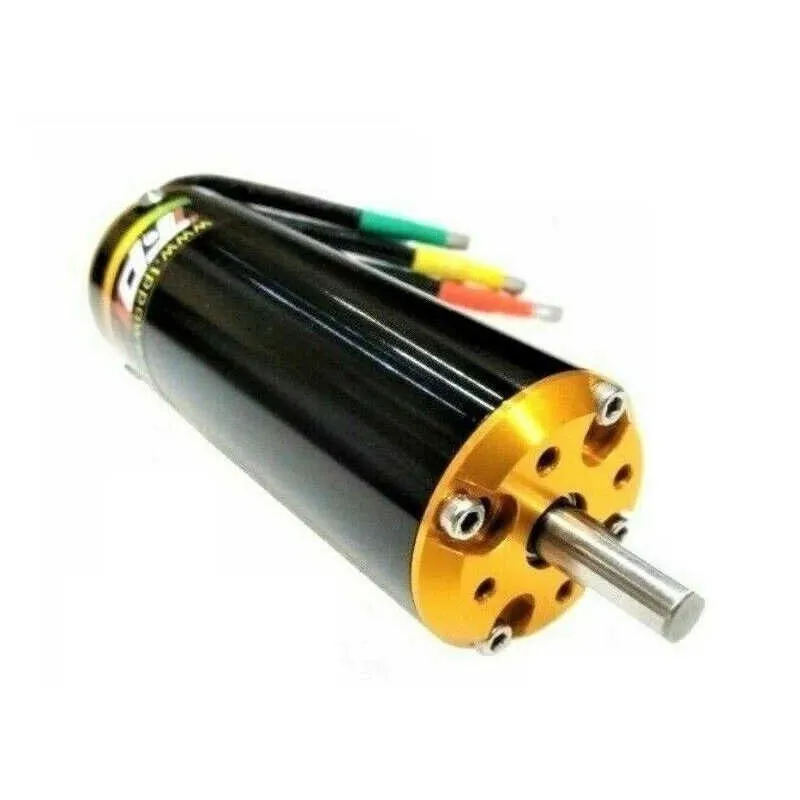The total current (amps) an RC motor and ECS will draw is always determined by vehicles speed and weight, also the terrain, drive style, motor efficiency will contribute to the current drawn.
Table of Contents
Brushless Motor Amp Draw Calculator: How to Calculate and Optimize Your Motor’s Current Draw
Brushless motors have become increasingly popular in recent years due to their efficiency, reliability, and performance. However, understanding the current draw of a brushless motor can be challenging, especially for those who are new to the hobby. Fortunately, there are online tools available that can help calculate the amp draw of a brushless motor.
A brushless motor amp draw calculator is a tool that helps determine the amount of current that a brushless motor will draw under certain conditions. This information is crucial for selecting the right battery, speed controller, and motor for a specific application. By inputting variables such as motor KV, battery voltage, and propeller size, the calculator can provide an estimate of the amp draw of the motor.
Using a brushless motor amp draw calculator can save time and money by preventing damage to the motor, battery, and speed controller due to overloading. It can also help optimize performance by ensuring that the motor is operating at its maximum efficiency. Whether you’re a beginner or an experienced hobbyist, a brushless motor amp draw calculator is a valuable tool to have in your arsenal.
What is a Brushless Motor Amp Draw Calculator?
A Brushless Motor Amp Draw Calculator is a tool that helps calculate the amount of current (amperage) that a brushless motor will draw from a battery. This tool is particularly useful for those who work with remote control (RC) vehicles, drones, and other devices that use brushless motors. By knowing the amount of current that a motor will draw, users can choose the appropriate battery and speed controller for their motor system to ensure optimal performance.
Brushless motors are commonly used in RC vehicles, drones, and other devices because they are efficient, powerful, and have a longer lifespan than brushed motors. However, they require a specific amount of current to function properly. If the current is too low, the motor will not work at its full potential, and if the current is too high, it can damage the motor and other components in the system.
With a Brushless Motor Amp Draw Calculator, users can input the specifications of their motor, such as the number of cells in the battery, the motor’s Kv rating, and the propeller size, to calculate the amount of current that the motor will draw. This information can then be used to select the appropriate battery and speed controller for the motor system.
Why is a Brushless Motor Amp Draw Calculator Important?
Calculating the amp draw of a brushless motor is essential for ensuring that the motor is operating efficiently and safely. Amp draw refers to the amount of electrical current that a motor draws from the power source to operate. Inadequate amp draw can cause the motor to underperform, while excessive amp draw can lead to overheating and damage to the motor and other components.
Using a brushless motor amp draw calculator can help determine the optimal amp draw for a specific motor and application. The calculator takes into account the motor’s voltage, Kv rating, resistance, and other parameters to calculate the expected amp draw. This information can then be used to select an appropriate motor controller, battery, and other components that can handle the expected amp draw.
Moreover, a brushless motor amp draw calculator can also help identify potential issues with the motor and the system. For instance, if the calculator indicates that the expected amp draw is too high, it may suggest that the motor is oversized for the application or that the system’s voltage is too low. Alternatively, if the expected amp draw is too low, it may indicate that the motor is undersized or that the system’s voltage is too high.
By using a brushless motor amp draw calculator, designers and engineers can optimize the performance and efficiency of their systems while minimizing the risks of damage and failure. It can also help save time and money by avoiding costly mistakes and ensuring that the system meets the required specifications.
Use ohm’s law to calc current based on the power needs and voltage used.
There is no way to precisely calculate the current drawn because there are so many different variables, to concider, but you can certainly get fairly close aproximation. The best way is to use a data logger, but failing that, estimating based on similar setups can get you in the ballpark.
Also, be careful with amp specs on ESC’s and motors. Some may be inflated to make them seem better than they are in reality. And even so, the load on the motor determines the current a motor will pull, and therefore what an ESC has to handle.

